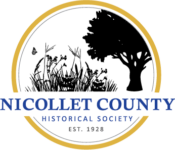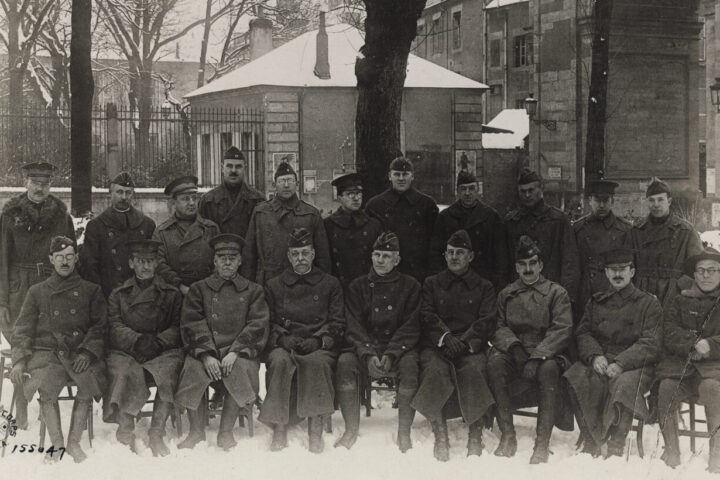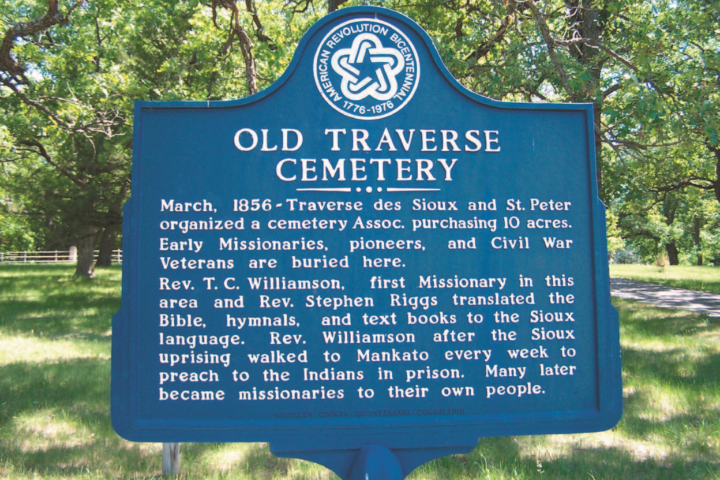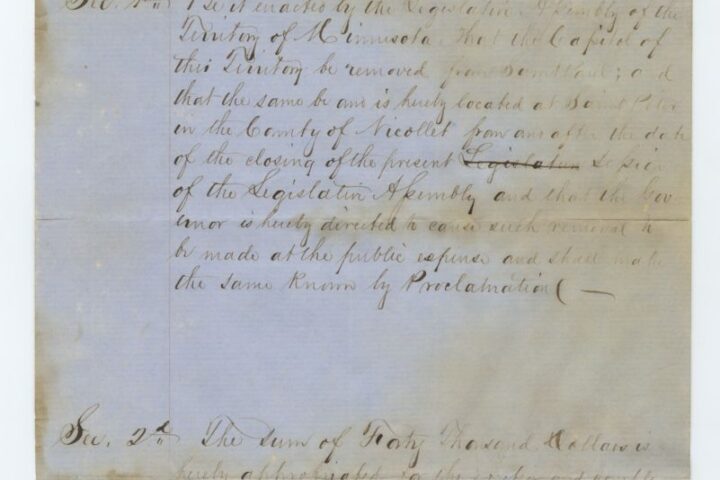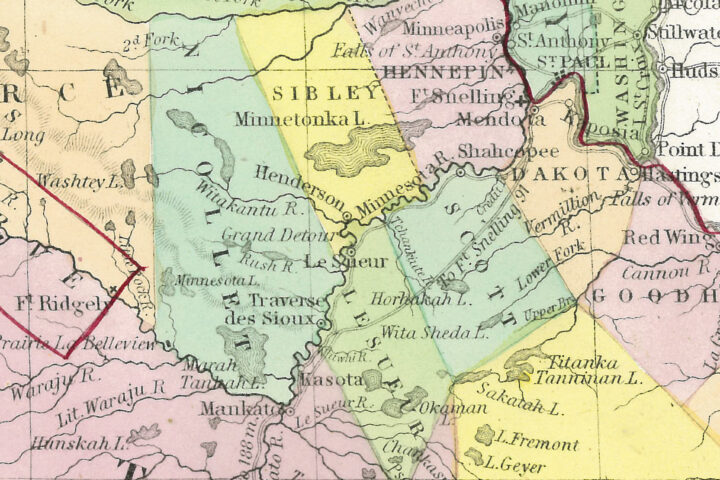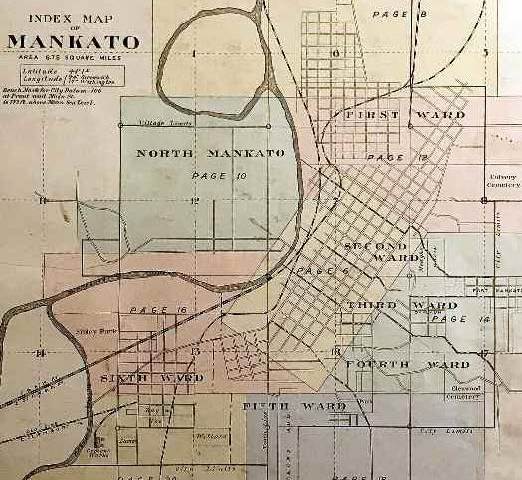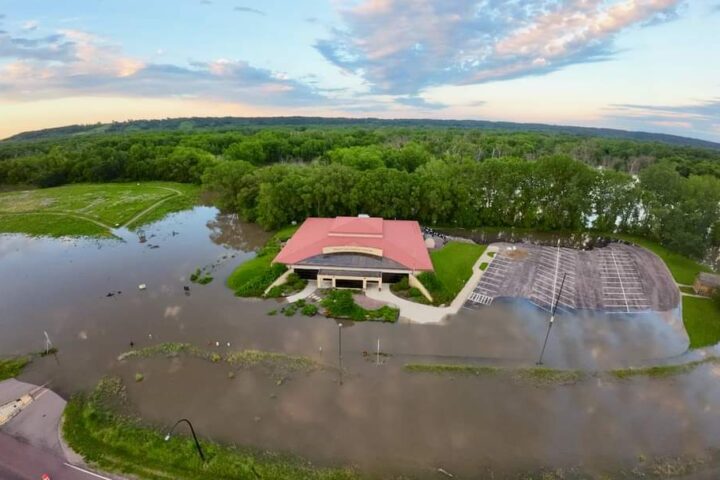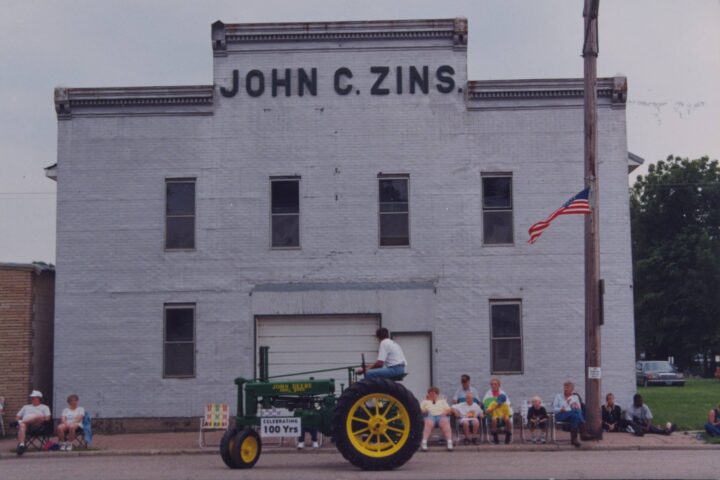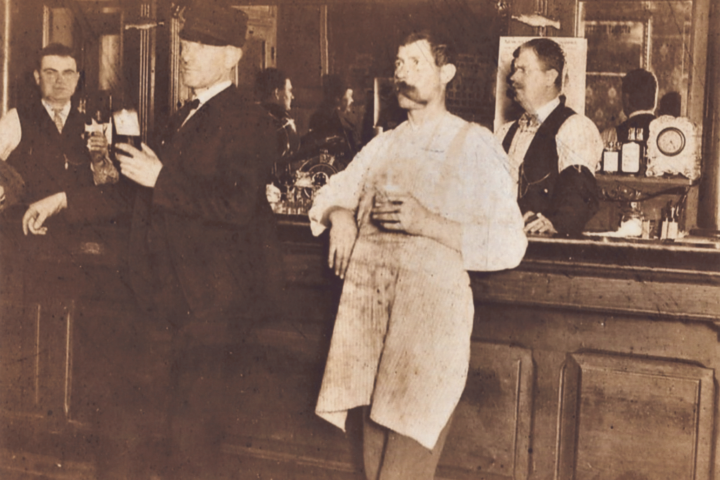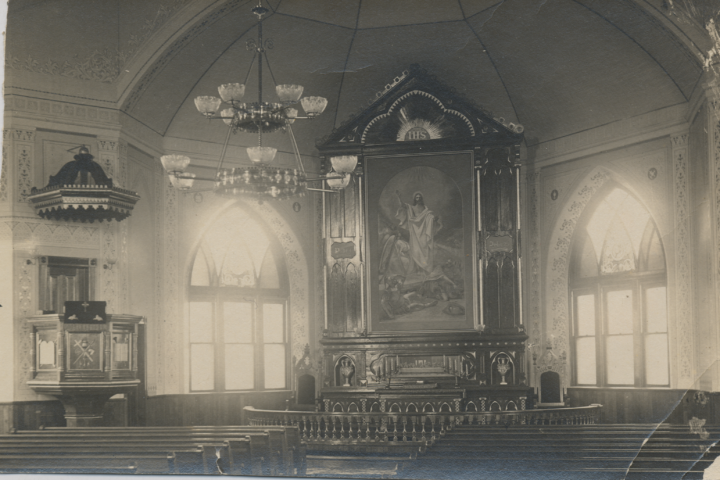Early St. Peter Churches
by Bob Sandeen, NCHS Research Assistant
Many pioneer residents began holding religious services in the St. Peter area as soon as possible after their arrival, beginning in the first half of the 1850s. The services were held in private homes, in rented spaces in commercial buildings, and in other locations until sufficient funds were obtained to build churches.
Missionaries arrived at the Traverse des Sioux crossing site of the Minnesota River in 1843 to minister to the Dakota Indians in the area. The land still belonged to the Indians, which meant that it was not legal for settlers to live here. That changed when the Treaty of Traverse des Sioux was signed in 1851 and ratified in 1852. A community named after the river crossing site began to grow as pioneers began to arrive.
The First Free Presbyterian Church of Traverse des Sioux was organized on November 5, 1853. A substantial structure was erected, but did not function as a church for very many years. The congregation merged with the First Presbyterian Church in St. Peter in 1869 to form the Union Presbyterian Church.
The St. Peter Presbyterians organized their church on October 25, 1857. They moved into a building of their own in the fall of 1859. It was located about where the statue of Governor John A. Johnson now stands, slightly north of the Nicollet County Government Center. It was used as a church until construction of the present church was completed in the early 1870s.
Today, the 1853 Presbyterian site is occupied by an apartment building on the southwest corner of the intersection of Gault and Nichols Streets. The Union Presbyterian Church, which was dedicated in April of 1872, is on the northwest corner of the intersection of South Third and West Locust Streets.
William Dodd was one of the founders of St. Peter and was the builder of the Dodd Road. His wife, Harriet Dodd, hosted services in their home for the community’s three or four dozen adults on
October 29, 1854. Services were later held in various locations until a frame church was constructed. It opened on July 26, 1857. The cornerstone of the current Church of the Holy Communion was laid on April 13, 1869. It is on North Minnesota Avenue, on nearly the same site as the frame church. This Episcopal Church was named after the one that Mrs. Dodd had attended in New York City before she arrived in St. Peter. The first service was on February 27, 1870, and the structure was consecrated by Bishop Whipple on July 27, 1870.
Mass was said in St. Peter for the first time in the mid-1850s in the dwelling place of Denis O’Brien. A church was built in 1856, but the inability of the congregation to make mortgage payments resulted in its loss during the national depression in 1857. Services were held in the courthouse until the financial issues were resolved and the church was reacquired. In 1888 Archbishop John Ireland approved splitting the congregation into an English-speaking one and a German-speaking one. The Germans built the Church of the Immaculate Conception, later known as St. Mary’s Church, on the northeast corner of the intersection of South Third and West Myrtle Streets in 1889. The English-speaking group dedicated the Church of St. Peter in 1912. It stood on the site of the previous church on the southwest corner of the intersection of South Fifth and West Myrtle Streets until it was destroyed in the March 1998 tornado. The current church is west of Sunrise Drive, along West Broadway. St. Mary’s Church closed in 1991.
A Methodist-Episcopal church was constructed at Traverse des Sioux sometime after the arrival of Rev. Lewis Bell in 1854. Rev. Edward Eggleston, a local resident who became a famous author, later served as a pastor in that church. In St. Peter, the Methodists formally organized as a congregation in 1867. They completed the construction of a church that year on the northwest corner of the intersection of South Fifth and West Nassau Streets. A new church was built on the same site in 1896, but it was destroyed by a fire in 1929. The congregation disbanded the following year.
The Swedish Lutheran settlers in the St. Peter area organized as a congregation in 1857. A small church on the south side of West Elm Street, between South Fourth and South Fifth Streets, was built the same year. A fire in 1887 destroyed it. A new church was already in use by that time. It was located on the northwest corner of the intersection of South Fourth and West Elm Streets, facing Minnesota Square Park. That building, which was dedicated in November of 1883, served the congregation until it was destroyed by a fire in 1962. The current First Lutheran Church is located on Sunrise Drive, at its intersection with Traverse Road.
Norwegian immigrants to St. Peter held services in their homes for a number of years, initially sharing a minister with the Norwegians in the Norseland area. It was not until 1867 that a church was formally organized in St. Peter. The first church building, which is still standing as a private residence, was on North Washington Avenue. It was used until the 1880s, when a move was made to North Third Street. From a peak membership of about 60 families, the membership had dropped to about 10 families by 1930. Today, the former church building on North Third Street is a private residence.
The English Lutheran Church held services in the English language for Lutherans who did not wish to attend services in the Swedish, Norwegian, or German languages. Beginning in the 1880s, services were conducted in English by clergymen from Gustavus Adolphus College in the evenings in the Swedish Lutheran Church. Services were later moved to the Norwegian Lutheran Church and eventually to the Zion German Evangelical Lutheran Church. The congregation finally had a church of its own when the First English Lutheran Church was erected near the southeast corner of the intersection of South Fifth and West Mulberry Streets in 1895. In a different building today at the same site, the church is now known as Trinity Lutheran Church.
As early as the 1850s, German Lutherans in St. Peter were served by traveling missionaries. It was not until 1867 that a congregation was organized to meet on a regular basis. At first, the Germans held services at such places as the Methodist Church, the Norwegian Church, the public school, and the courthouse. Near the end of 1870, a church was dedicated on the northeast corner of the intersection of South Fifth and West Mulberry Streets, facing Mulberry. Their second church was built on the same site. It was dedicated on December 16, 1923. That church was destroyed in the March 1998 tornado. The present St. Peter Evangelical Lutheran Church building is on the same corner as the first two churches.
St. Peter also had a Baptist Church and a Christian Church in the early years, but little is known about them. Another little-known church was the Zion German Evangelical Lutheran Church, which was organized in 1871. It was a German Methodist Church that had not held services for over a year by the beginning of 1894.
